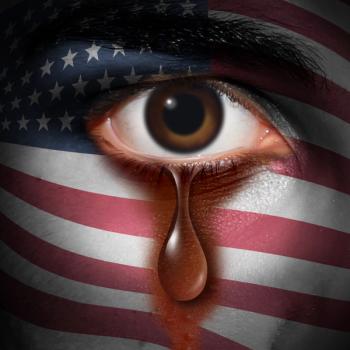
Now’s the Time for the Bio-Psycho-Social-Environmental Model
Here's a model that can stimulate psychiatrists to understand and address denial of global warming, the cognitive dissonance and guilt of our own responsibility, and the role of resilience in adapting to environmental changes.
“True transcendence always includes the previous stages, yet somehow also reshapes and expands them”
- Richard Rohr, Franciscan Friar
When I did my residency training in 1972-1975, it included all 3 parts of what became our bio-psycho-social model. This model was espoused by the psychiatrist George Engels, MD, and was quickly adopted by all of medicine, most especially by psychiatry.1 At its heart, the parts of this model can be broken down into its components and eras of predominance.
1977: The Social
Dr. Engel’s model implicitly added the advances in the social aspects of psychiatry that emerged after President Kennedy and Congress established the Community Mental Health Centers Act in 1963. That increased attention on the underserved in our communities and the importance of cultural competence in their care. Both the American Association for Social Psychiatry, of which I became President in 2000, and the American Association of Community Psychiatry, of which I was a founding board member, emerged to become devoted to this part of our model.
1937: The Psychological
The psychological part of that model seemed to coalesce about 40 years before the social component. That period was when the psychoanalytic ideas of Freud started to infuse American psychiatry, especially after many psychoanalysts fled Nazi-controlled countries. Many chairs of Departments of Psychiatry were filled by these psychiatrists.
1897: The Biological
When Freud was transitioning from being a neurologist to a psychiatrist, the biological part of the model was dominant. Emil Kraepelin, MD (1856-1926)--often thought to be the forefather of modern psychiatry, thought psychiatry to be biological in dysfunction. Indeed, Freud himself thought that his psychological theories would eventually be replaced by biological explanations. As that focus developed so extensively when more and more psychiatric medications became available, and as for-profit managed care systems emerged, some claimed, dismayingly, that our model had become a bio-bio-bio one.
2017: The Environmental
Despite the dominance of the bio in the bio-psycho-social model, climate change and other environmental problems began to elicit more attention in psychiatry.2 By now, there has been comprehensive and scholarly attention to the biological,3 psychological,4 and social5 psychiatric aspects of climate change. Just recently, the new Climate Psychiatry Alliance (CPA) hosted a workshop and symposia on these connections at the American Psychiatric Association’s IPS meeting. Both the American Psychiatric Association and the American Association of Community Psychiatrists have released position statements on climate change, and the American Psychological Association has been paying attention to this concern for many years now.
Even so, that may not be enough of an infusion of the environmental. That area of concern is also distinct enough to justify its own designation in our model of psychiatry and general medicine. The environmental may center on the weather and climate, but may also include such variables as air pollution and water pollution. New syndromes are emerging, such as solastalgia and Nature Deficiency Disorder.6 The specific treatments are being worked out, including eco-psychotherapy, which has a professional journal devoted to its subject matter. It is also becoming clearer that Disaster Psychiatry needs to expand from focusing only on acute events to include the slow-moving and emerging disasters like climate instability.
To enhance our attention and our mindset, I would therefore recommend an expanded model: the bio-psycho-social-environmental model.
Alternatively, ecology could be substituted for the environment and be expressed in this terminology: the bio-psycho-eco-social model.
This kind of focus can stimulate psychiatrists to use our specialty’s knowledge to understand and successfully address the denial of global warming, the cognitive dissonance and guilt of our own responsibility, and the role of resilience in adapting to environmental changes. The health and mental health well-being of the world in the future seems now to be at a tipping point. We psychiatrists can be the missing ingredient necessary to slow this process.
References:
1. Sabshin M. Changing American Psychiatry: A Personal Perspective. American Psychiatric Publishing, Inc, Arlington, VA, 2008.
2. Lundberg A. The Environment and Mental Health: A Guide for Clinicians. Routledge, 1998.
3. Chivian E, Bernstein A. (eds): Sustaining Life: How Human Health Depends on Biodiversity. Oxford University Press, 2008.
4. Weintrobe S (ed). Engaging with Climate Change: Psychoanalytic and Interdisciplinary Perspectives. Routledge, 2012.
5. Dunlap R, Brulle R. Climate Change and Society: Sociological Perspectives. Oxford University Press. 2015.
6. Louv R. Last Child in the Woods: Saving Our Children From Nature-Deficit Disorder. Algonquin Books, 2008.
Newsletter
Receive trusted psychiatric news, expert analysis, and clinical insights — subscribe today to support your practice and your patients.




